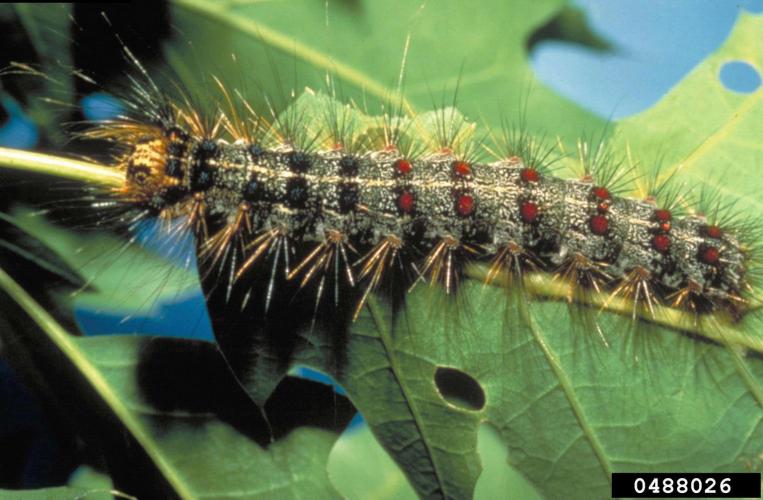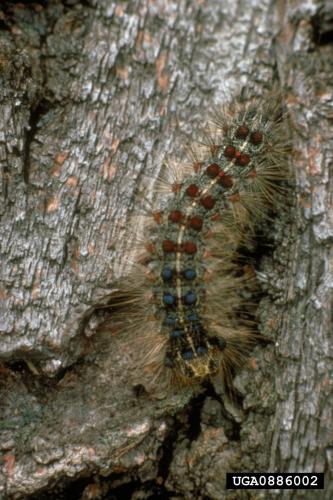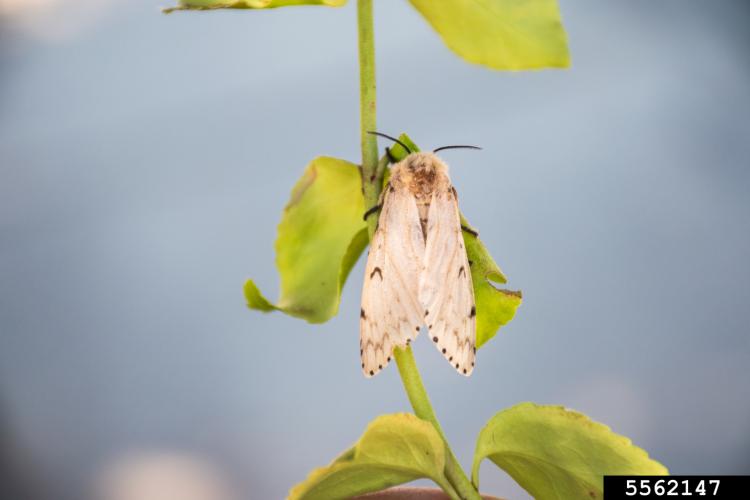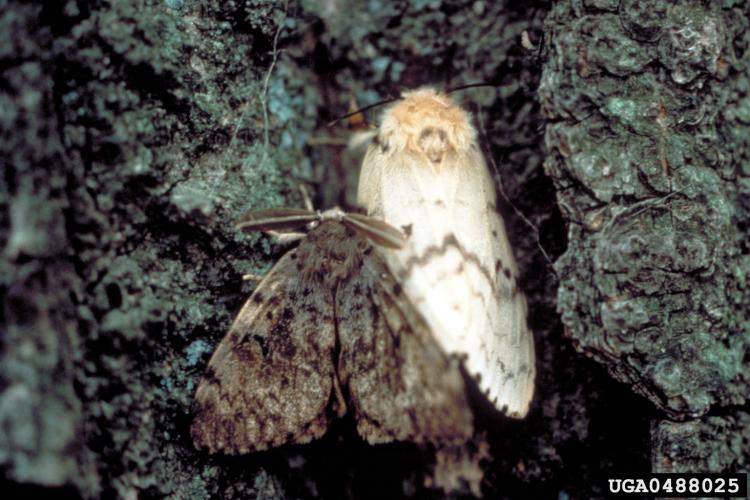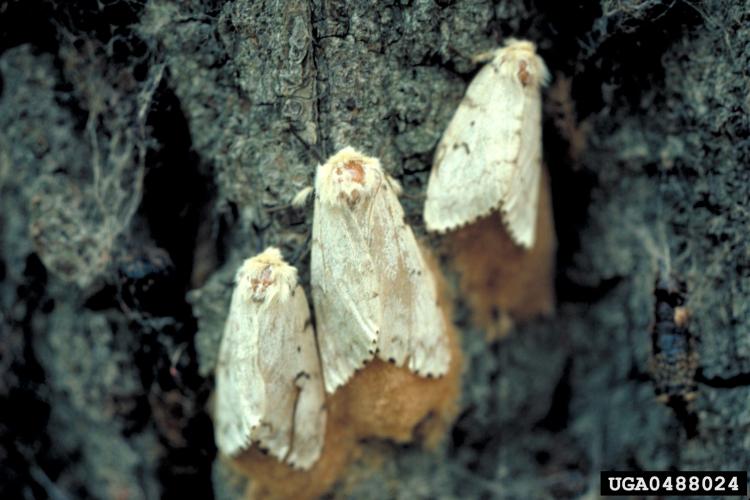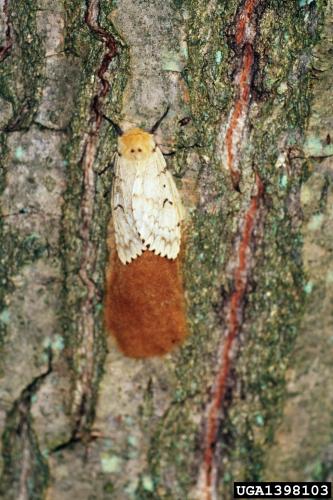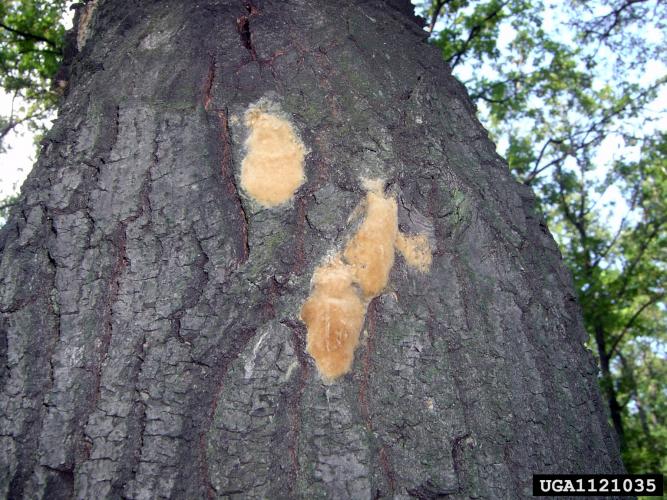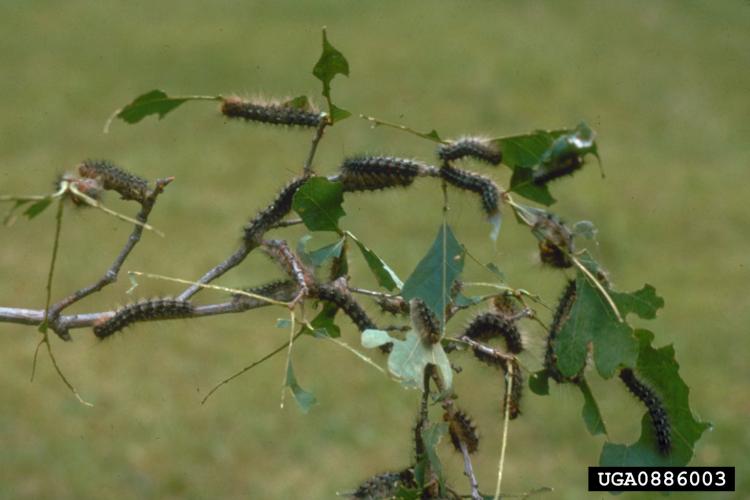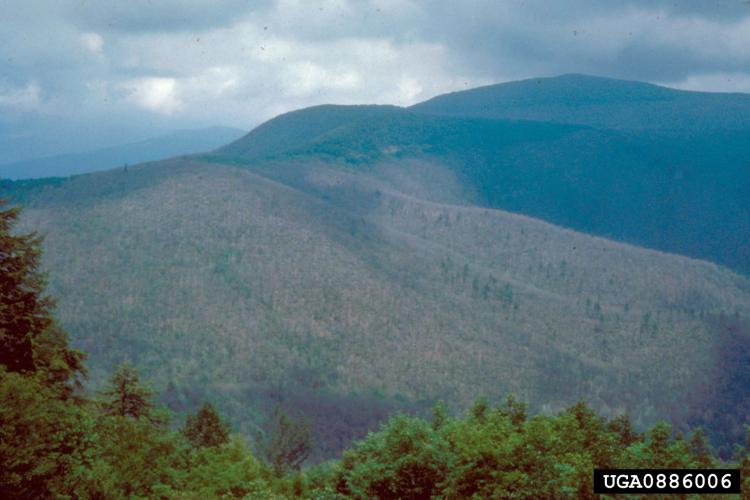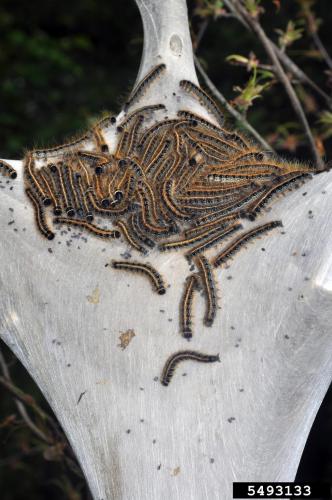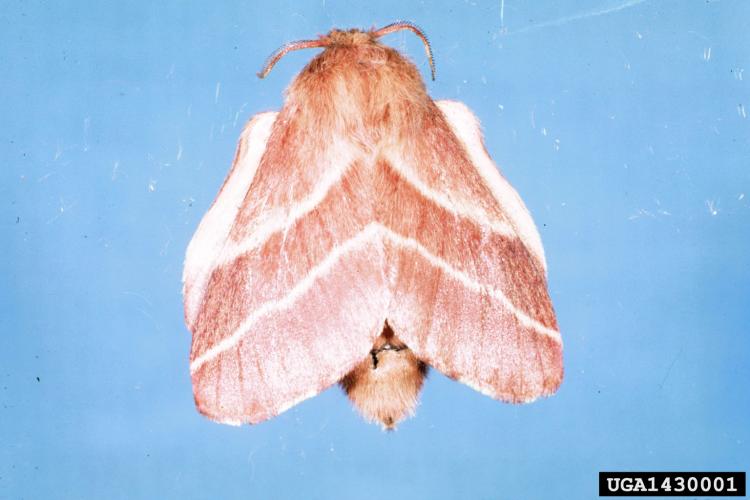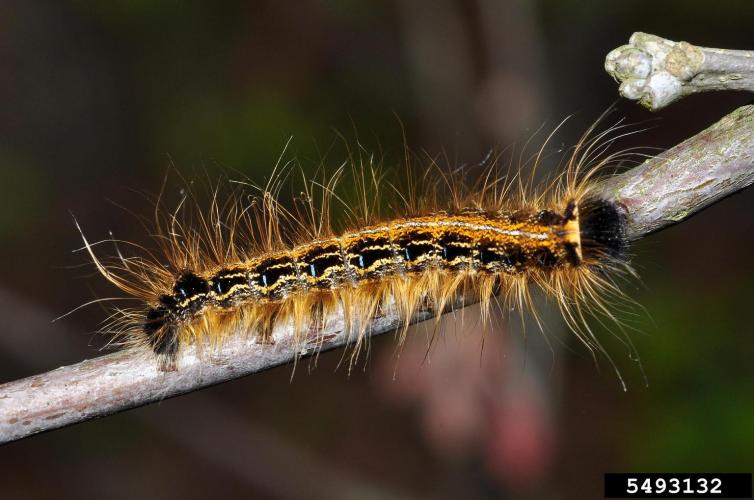Spongy Moth (formally gypsy moth)
Identification
Spongy moth (formally gypsy moth) outbreaks occur in cycles, and when populations rise, they are serious defoliators of hardwood trees and shrubs. Otherwise healthy trees can generally survive several years of defoliation, and to track population outbreaks, Vermont Department of Forests, Parks, and Recreation conducts egg mass surveys across Vermont.
Older larvae (caterpillars) are brownish-gray, with tufts of hair on each segment and a double row of five pairs of blue spots, followed by six pairs of red spots, on the back. Mature larvae are from 1 1/2 to 2 1/2 inches long.
Adult male moths have light tan to brown wings marked with dark, wavy bands, and a 1.5 inch wingspread. Female moths are larger than males and generally white, with a wingspread of about 2.5 inches.
Signs and Symptoms
- Young larvae chew small holes in leaves.
- Older larvae feed on leaf edges, consuming entire leaves except for the larger veins and the midribs. The entire tree is often defoliated.
Biology
Origin
The spongy moth accidentally escaped from the home and lab of Dr. Trouvelot, who brought the moths to Medford, MA to see if they could be developed into an alternative to the silk moth. Since then, spongy moth has spread throughout the Northeast and well beyond.
Habitat
Spongy moth is known to feed on over 300 trees and shrubs. Favored hosts include oak, apple, alder, basswood, birch, poplar, sweet gum, willow, and hawthorn. Less favored host species include hickory, maple, cherry, cottonwood, elm, black gum, larch, sassafras, and hornbeam. Some mortality even occurs in white pine. Many other plants may be fed upon.
Life Cycle
The spongy moth goes through four stages of development—egg, larva (caterpillar), pupae (cocoon), and adult (moth). This species produces one generation per year.
Eggs: egg mass are laid in the fall and will typically contain between 500 and 1,000 eggs per mass. Egg masses are covered with buff or yellowish “hairs” from the abdomen of the female. The velvety egg masses vary in size but average about 1.5 inches long and .75 inches wide. Eggs start to hatch around early May in the northernmost United States.
Larvae: Older larvae (caterpillars) are brownish-gray, with tufts of hair on each segment and a double row of five pairs of blue spots, followed by six pairs of red spots, on the back. Mature larvae are from 1 1/2 to 2 1/2 inches long.
Caterpillars may remain in the lower forest canopy or, when in high populations, migrate upwards to the tree tops, where each one then spins down on a long silken thread. The caterpillars use a process of dispersal is known as “ballooning” and is somewhat common in species where the adult females do not fly. The caterpillars hang in the air, waiting for a strong wind to break the thread and carry them to a new location. This type of dispersal helps young larvae relocate to more favorable hosts. The caterpillars are voracious eaters, tend to feed at night, and gather in protected areas during the day. They may even gather in nests of the eastern tent caterpillar. Caterpillars stop feeding when they enter the pupal or cocoon stage. Spongy moth caterpillars do not make silken webs or tents.
Pupae: Larva pupate in June-early July. Pupae are reddish dark brown, cylinder-shaped, and sparsely covered in hairs. Pupae are between 3/4 to 1 1/2 inches long and are attached to protected surfaces such as bark or rock crevices. Adults emerge in 10-14 days.
Adults: Adult male moths have light tan to brown wings marked with dark, wavy bands, and a 1.5 inch wingspread. Female moths are larger than males and generally white, with a wingspread of about 2.5 inches. Despite having larger wings, the female moths cannot fly. Neither sex feeds in the moth stage. Adults mate and lay eggs in August to September.
Ecological Threat
Young larvae chew small holes in leaves, while older larvae consume entire leaves except for the larger veins and midribs. The whole tree may be defoliated, resulting in reduced growth and loss of vigor, as well as reduced aesthetic, recreational, and wildlife values. If total defoliation is experienced over several years, mortality may result.
Vermont Distribution
Spongy moth is established in Vermont.
Visit spongy moth website from VT Department of Forests, Parks, & Recreation.
How You Can Help
Monitor for defoliation and egg masses throughout the season on high-risk trees. Inspect outdoor equipment, trailers, and vehicles before moving from a regulated area to an uninfested area and always buy and burn local firewood
Citations
Information
VT Department of Forests, Parks & Recreation's Spongy Moth page
Ontario's Invading Species Awareness Program Fact Sheet
A Field Guide to Common Insect Pests of Urban Trees in the Northeast, Vermont FPR
Images
John Ghent, Bugwood.org (488026, 0488025)
Tim Tigner, Virginia Department of Forestry, Bugwood.org (0886003, 0886002, 0886006)
Daniela Lupastean, University of Suceava, Bugwood.org (1121035)
Steven Katovich, Bugwood.org (1398103)
Karla Salp, Washington State Department of Agriculture, Bugwood.org (5562147)
William M. Ciesla, Forest Health Management International, Bugwood.org (5493133, 5493132)
Lacy L. Hyche, Auburn University, Bugwood.org (1430001)
